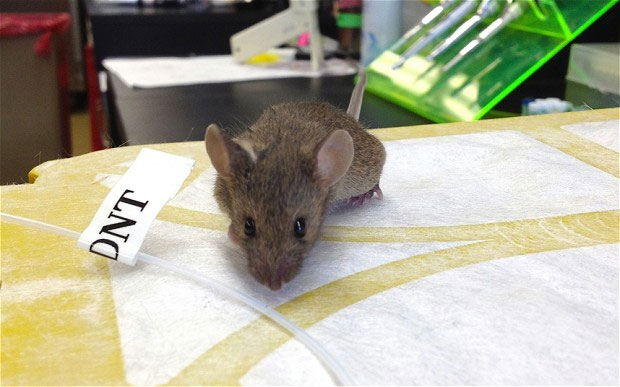Mine detection with genetically modified mice
With sense of smell 500 times more sensitive to normal mice, genetically modified mice can become effective tools for human demining in the future.
Dr. Charlotte D'Hulst, a researcher at City University in New York, USA, and her colleagues genetically engineered mice to increase their ability to detect Dinitrotoluene (DNT) explosive odor 500 times. DNT has the same chemical composition Trinitrotoluene (TNT), the popular explosive in mines, Telegraph reported.

The ability to detect DNT explosive of mice changed
genes are 500 times higher than normal mice. (Photo: Telegraph)
Mice detect most of the smell thanks to a few thousand neurons that sense the smell in their nose. But the gene transformation technique has increased the number of smell-sensing nerve cells by one million, so their ability to detect DNT smells has increased to 500 times.
Tests show that genetically modified mice can detect tiny amounts of explosives in the lab. Two mice can detect all mines in an area of 300m2 in two hours. If two minesweepers work on the same area, they will complete the job in two days.
Because mice are small in weight, if they step on the mines, mines will not explode. Microelectronic chips implanted under mouse skin will signal to computers when they detect the smell of explosives. Landmine experts will base on the location of the mouse to determine the location of the mine, thus reducing the risk of casualties.
Apopo, a charity in Belgium, has successfully trained large African kangaroos into animals capable of detecting mines. However, the process of training large African kangaroos lasts up to 9 months. In contrast, genetically modified mice from City University can detect mines without training.
Even so, D'Hulst said that his mice would only be able to detect mines in the field after at least five years.
- The Japanese laboratory almost snapped the genetically modified mice
- Countering genetically modified corn causes cancer in mice
- Using genetically modified foods is prone to cancer
- You plan to release genetically modified mice to deal with the rat pandemic
- Genetically modified plants still cause doubts
- Africa uses mice to clear mines
- Listen to mice 'sing' like birds
- Genetically modified food in Vietnam ever since?
- Genetically modified salmon in the US is controversial
- 6 academies rejected the study of GM maize causing cancer
- Things you should know about GMO genetically modified foods
- Genetically modified insects threaten genetically modified plants
 Animal 'suffering' after hibernation
Animal 'suffering' after hibernation Why do goats climb well?
Why do goats climb well? Scientists were surprised to see chimpanzees eating turtles
Scientists were surprised to see chimpanzees eating turtles Giant catfish died deadly due to drought in Thailand
Giant catfish died deadly due to drought in Thailand